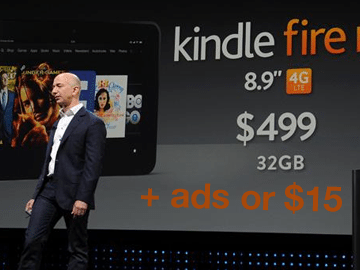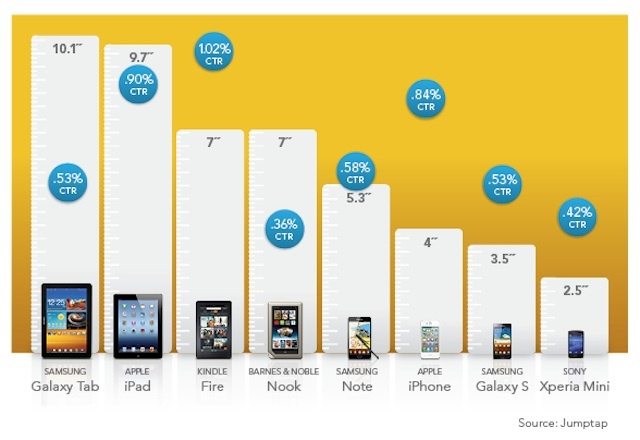Lower prices don’t come without their shortfalls – not even when said low prices come from the world’s largest online retailer.
When Jeff Bezos and team revealed the new line of Kindles at the product launch on September 6, 2012, they neglected to mention the intended ad policy: all devices would come standard with ads or, rather, “Special Offers,” in Amazon vernacular. Devices at all price points – from the $199 Kindle HD to the $499 Kindle Fire HD 8.9″ 4G LTE Wireless – would display the ads every time they are unlocked.

“We know from our Kindle reader line that customers love our Special Offers and very few people choose to opt out,” a defensive (and perhaps delusional?) statement from Amazon spokeswoman Kinsley Pearall read.
The announcement obviously led to massive outcry from Kindle fans and critics alike, and less than a week later, despite their determination not to, Amazon announced an opt-out option. Now users can opt out of ads for a one-time rate of $15.
While the constant ad bombardment may be a crappy move in the eyes of consumers, Amazon wasn’t without its data-supported reasons.
People buy the Kindle Fire for the price tag
A June 2012 study from ComScore shows that price is the top purchase consideration for Kindle Fire buyers – higher than brand name, operating system or selection of apps available. Mewanwhile, iPad buyers are preoccupied with the presence of the Apple logo.
If people buy their device for the low price, why not give them even more of what that want: an even lower price? The ads are one opportunity to offer the device at a lower price.

Kindle Fire ads have the highest clickthrough rate of any mobile device
A study from Jumptap suggests that Amazon’s Kindle Fire has a higher CTR than any other mobile device, iOS and Android devices included. The average CTR on the Kindle Fire is 1.02%, versus 0.90% for iPad and 0.84% for iPhone.
If the Kindle Fire is already driving the highest CTRs in the mobile universe, why not push that a bit further by introducing the ad platform to all devices, not just the e-readers?

These stats made Amazon’s business decision pretty easy, but business sense and happy consumers are two different things.
“If Apple suddenly said its new iPad included Special Offers, people would go ballistic,” PC Mag’s Jamie Lendino says. He’s got a point. But maybe, just maybe, this is where we’re going: freemium, or at least discounted, hardware that comes with an ad-based price tag.
Unfortunate? Yes. But this phenomenon is nothing new; in fact, the very same trend has been working its way through the social-mobile space for months if not years. The Atlantic’s Senior Editor Derek Thompson laments over the ad-based corruption of freemium products like Facebook, Twitter and mobile applications in “Why the Social Media Revolution Is About to Get a Little Less Awesome,”
“If we’re graduating from the ‘making delightful and cheap things’ stage of the social age to the ‘making money’ stage,” he says, “make no mistake: Things will get less delightful. In order to be profitable, it is highly likely that Twitter can only get more annoying, Pandora can only get more interrupt-y, Tumblr can only get more cluttered, Facebook can only get more devious, and the app baubles on your iPhone can only get more expensive.”
Did Amazon just make the Kindle Fire a little less delightful with the introduction of ads? Or is any means of cutting cost worth our while?